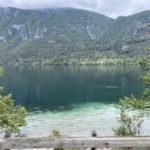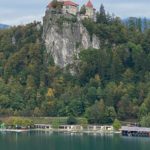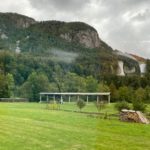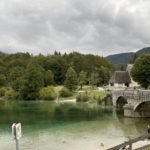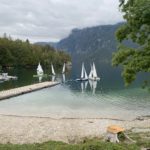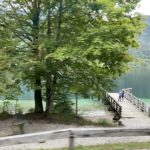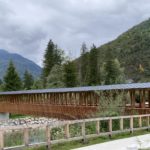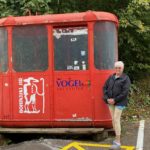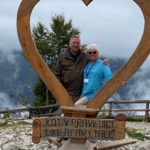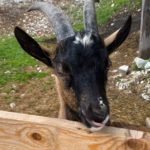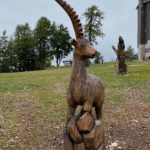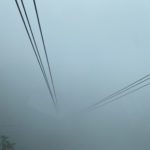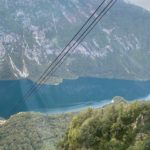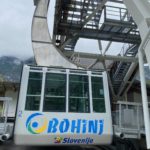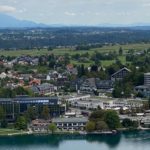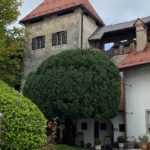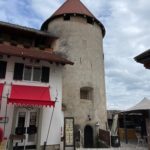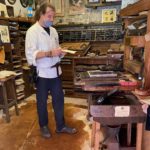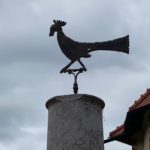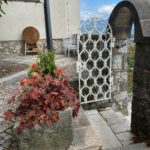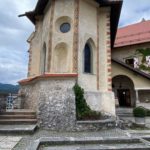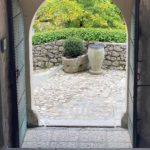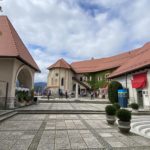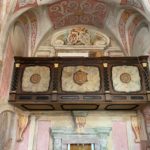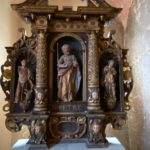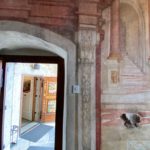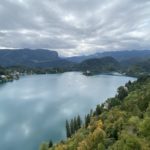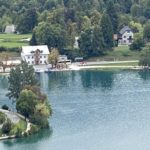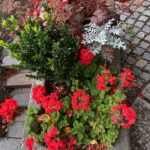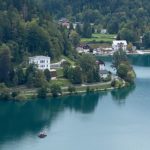Lake Bled, Slovenia
First a bit about Slovenia. Slovenia was one of the six republics or areas that made up Yugoslavia back when we studied geography. In the early 90’s each became independent, with Slovenia ranking number 5 of the 6 in terms of area. Slovenia is located in the Julian Alps, featuring biking, hiking, skiing, and other outdoor adventures. The national flag of Slovenia features the tallest three peaks. The island in Lake Bled pictured above originally was the site of a temple to a pagan goddess of fertility and love. Today it is the site of a Roman Catholic Church, accessible only by boat. The stairway in the photo, features 99 steps to reach the church. Folklore dictates that when a couple marries, the groom carries his bride up the 99 steps to strengthen their marriage and to grant them a lifetime together. There is a Wishing Bell in the church, donated by a philanthropist, who wanted visitors to have the opportunity to ring the bell and be granted their wish. The boats in the photo are plenta powered by oarsmen, since Lake Bled does not permit powered boats. The boats are built by locals, the originals date back to the 1590’s.
Today, despite cloudy, overcast conditions, we headed off to Bohinj Lake. Lake Bohinj is 4.2 km (2.6 mi) long and 1 km (0.62 mi) at its maximum width. It is a glacial lake dammed by a moraine (A wholesale isotretinoin moraine is any accumulation of unconsolidated debris (regolith and rock), sometimes referred to as glacial till, that occurs in both currently and formerly glaciated regions, and that has been previously carried along by a glacier or ice sheet). The largest of the streams that flow into the lake, the Savica (‘little Sava’), is fed from Erno jezero (Black Lake), the lowest-lying lake in the Triglav Lakes Valley. The outflow at the eastern end is the Jezernica creek which merges with the Mostnica to form the Sava Bohinjka, which in turn becomes the larger Sava River at the confluence with the Sava Dolinka. Belsazar Hacquet discovered in the 18th century, much more water leaves Lake Bohinj than enters it, which led to the discovery of subterranean sources of water. At its deepest the lake is 40 meters.The clear waters are the habitat of brown trout, burbot, European chub, common minnow and Arctic char, eight genera of molluscs, as well as of numerous algae species. It is a popular day trippers’ destination for swimming and other water sports. On the shore is a statue of the legendary Goldhorn (Zlatorog) chamois, whose story was immortalized by the poet Rudolf Baumbach. In Slovene folklore, Lunglei Goldhorn or Goldenhorn (Slovene: Zlatorog) is a legendary white chamois buck, or alternatively, an Alpine ibex, that had his realm in the heights of Mount Triglav.
We saw many alpine hay drying sheds along our trip. They are protected as local heritage now and formerly used to hang hay to dry. Of course, today the farmers use modern technology to make hay bales.
We took a cable car up Vogel Mountain, but the spectacular views were hidden by cloud cover. At the restaurant at the top, we tasted a Zlatorog beer, named for the Goldenhorn. It was fairly hoppy but tasted pretty good.
Then it was off to Bled Castle! Bled CastleÂ(Slovene: Blejski grad) is a medieval castle built on a precipice above the city of Bled in Slovenia, overlooking Lake Bled. It is visible from our balcony at the hotel. It is the oldest Slovenian castle and is currently one of the most visited tourist attractions in Slovenia. Nowadays, the castle is essentially a historical museum with a collection that represents the lake’s history. The castle was first described in a 22 May 1011 deed granting The Bishops of Brixen ownership issued by Emperor Henry II and it was their residence for eight centuries. Then it passed to the Austrian House of Habsburg in 1278. The oldest part of the castle is the Romanesque tower. In the Middle Ages more towers were built and the fortifications were improved. Other buildings were constructed in the Renaissance style. The buildings are arranged around two courtyards, which are connected with a staircase.

The Duke and Duchess inviting the wedding guests up to the upper courtyard for the wedding celebration
There is a chapel in the upper courtyard, which was built in the 16th century and renovated around 1700, when it was also painted with illusionist frescoes. The castle also has a drawbridge over a moat. While we were there, they were setting up for a wedding. As we were leaving the guests arrived, and were greeted by the Duke and Duchess (enactors in costume) who invited them to climb the staircase to the upper courtyard to witness the wedding.
We returned to the hotel, took a meandering stroll to the lake and relished in the afternoon sunshine.
Dinner was a buffet served at the hotel. It did feature some regional specialties, but like all buffets it was fairly ordinary. Â It is very difficult to prepare food and have it sit in a warmer for a while, before it is consumed, and have it taste fresh.


